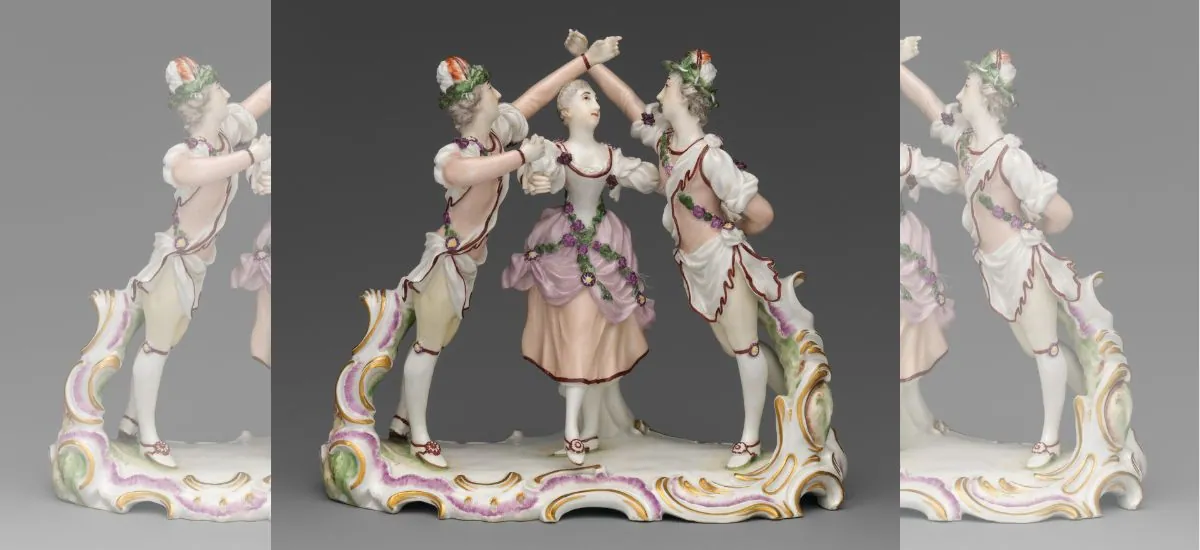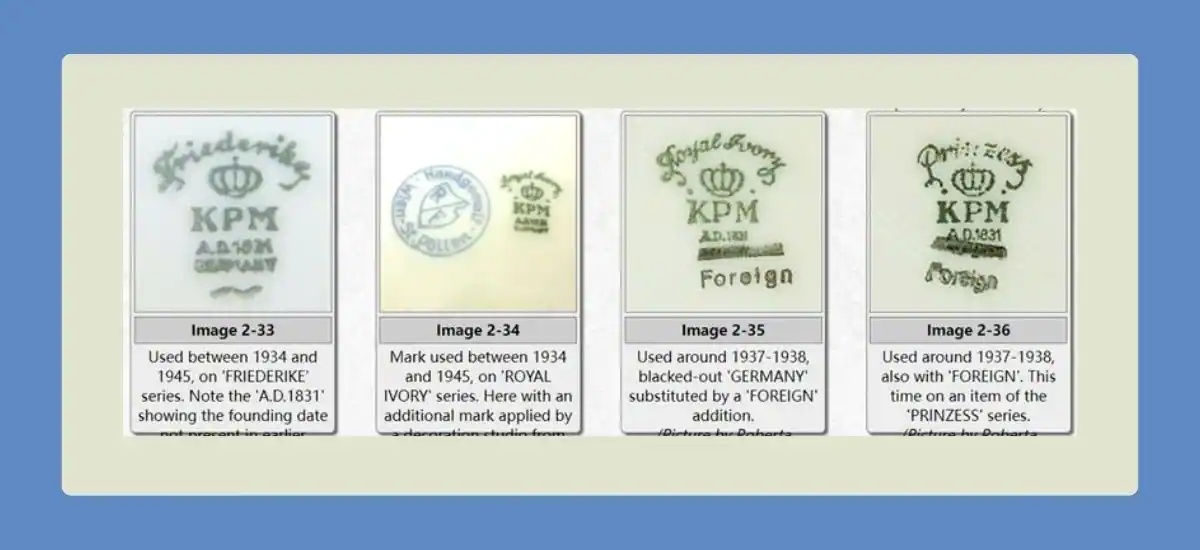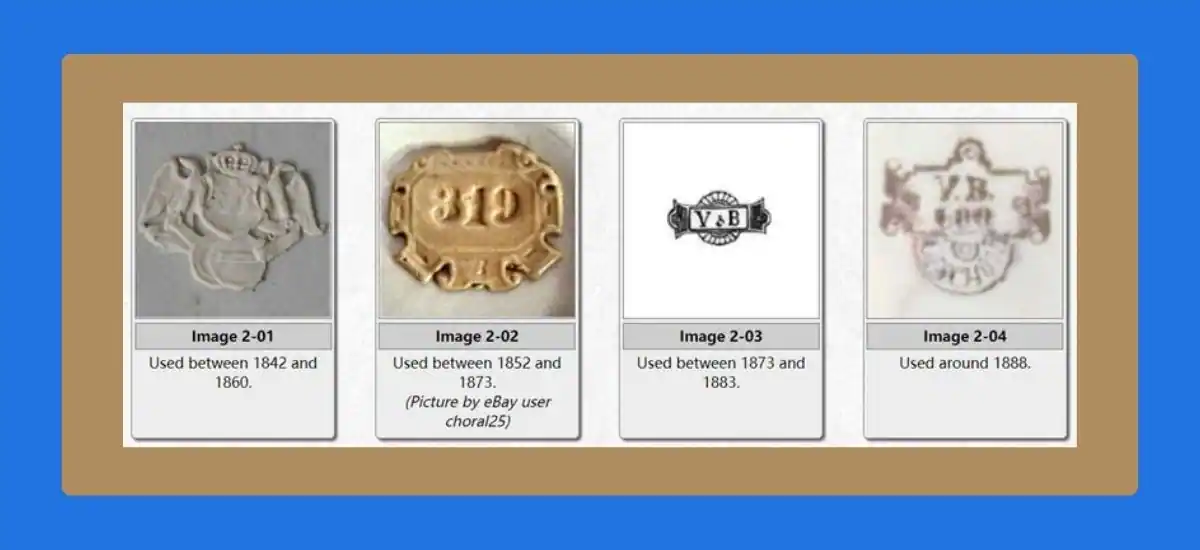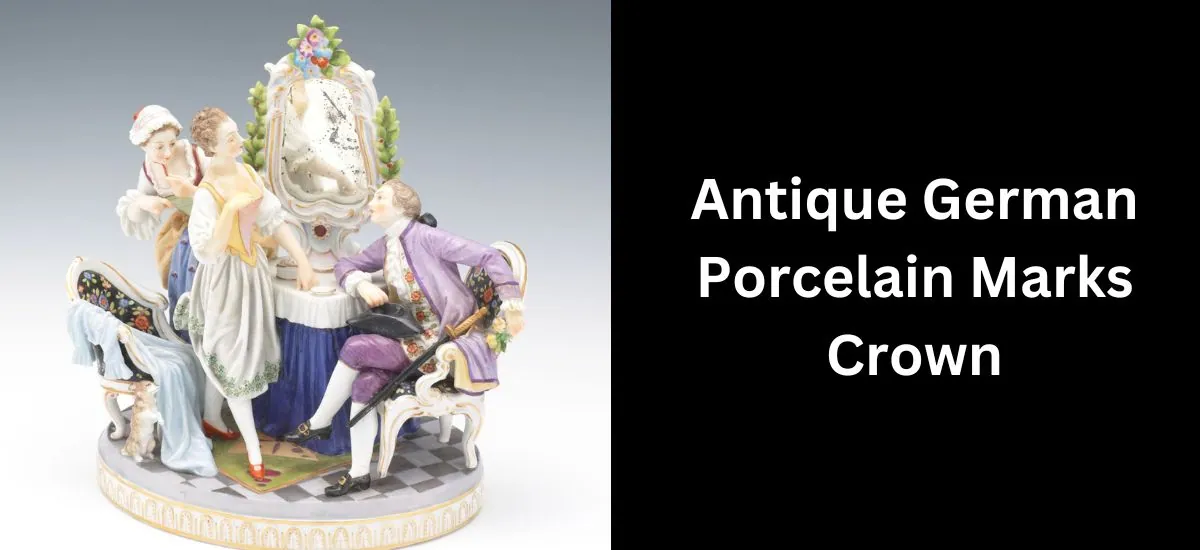Germany is well-known worldwide for its exquisite Meissen porcelain plates and customary salt-grazed beer jugs and steins.
Collectors must examine the porcelain marks to determine the many porcelain styles that fall under each of these genres.
The first step in establishing an antique’s overall value is typically identifying marks on a piece of porcelain.
However, you might not know how to recognize antique German porcelain marks if you are new to collecting antiques.
This comprehensive guide contains crucial details on distinguishing authentic antique German porcelain from reproductions and fakes.
How to Identify Antique German Porcelain Marks

1. The Manufacturer’s Mark Can Be Found
To assist buyers in recognizing their porcelain purchase from rival goods, manufacturers paint or stamp a distinctive mark on each piece. The manufacturer’s mark is typically at the bottom of German porcelain objects.
Some of the first marks on German porcelain were merely symbols, bearing neither the location of origin nor the manufacturer’s name. Later marks, however, typically incorporate the location and initials of the production company.
2. Note the Texture of the Glaze
Does the porcelain’s glaze appear crystalline, smooth, or cracked?
Salt glazing creates a hard, crystalline surface with the appearance and feel of orange peel. A lava-like cratered surface may be seen on the thick “fat lava” employed in the 1960s and 1970s.
3. Note the Color of the Glaze
Are the glazes on your porcelain object painted or applied in stripes of different colors?
Cobalt blue glaze, one of only a few glazes that can be burned at the extraordinarily high temperature required for salt-grazed pottery, is typically painted with designs to beautify salt-glazed porcelain.
Most West German porcelain from the 1960s and 1970s is glazed in vibrant hues.
4. Take Note of the Form of Your Porcelain Item.
After World War II, the German porcelain industry had an explosion of inventiveness that led to asymmetrical and exaggerated designs, some of which were unique to specific makers.
For instance, in 1954, Ruscha unveiled the “Shape 313” created by Kurt Tschörner.
Up to the factory’s closure in the 1970s, its unusual design was still in demand.
5. Research Using Your Observations
You can use a few methods to determine the mark on your porcelain item after noting its main characteristics. We’ll examine the three choices you have below:
Choice 1: Go to a library
Choice 2: Employ a professional
Choice 3: Look for comparable marks online
6. German Porcelain: Most Common Marks

You must be familiar with the many businesses that first controlled the German-China porcelain market to recognize vintage Germain porcelain marks:
1. Meissen Porcelain Factory

The Meissen Porcelain Plant, the oldest German porcelain factory, was established soon after German alchemist Johann Friedrich Bottger learned the closely-kept technique for creating hard-paste porcelain.
Augustus, the Strong of Saxony, created the Meissen Porcelain Factory in response to Bottger’s findings.
The Meissen Porcelain Factory’s initial trademark was a double-crossed sword. But it’s important to remember that the company’s porcelain insignia had many changes.
There are some outstanding examples of genuine Meissen Porcelain Factory markings on this relics page.
2. Frankenthal Ceramics

In 1755, the German city of Frankenthal saw the founding of Frankenthal Porcelain. The business was well known for its intricate sculptures.
Even though several reproductions of the company’s original items have been produced, Frankenthal Porcelain no longer exists despite its 18th-century heyday.
The arched bases and doll-like faces of the company’s components help to identify them.
In recognition of the royal family, the company’s porcelain marks incorporate a crown or lion.
Although the company’s marks have changed throughout the years, the majority still contain the name or initials of the business.
3. Kingie Porzellan Manufacture

Fredrick the Great established Konigliche Porzellan Manufaktur, also referred to as K.P.M., in 1763. The porcelain marks used by the corporation range from simple lines to scepters, orbs, and crowns.
Later, the business added its initials to the marks.
To ensure that the finest porcelain came from Germany, Fredrick the Great founded Konigliche Porzellan Manufaktur. The company specializes in creating beautifully molded and hand-painted figures and tableware.
4. Villeroy & Boch

Since the 18th century, this firm has produced porcelain and ceramics. The brand Villeroy & Boch is still available. The porcelain products of the company have the markings “Made in Germany,” “Mettlach,” “V&B,” and others.
Read More: Most Superior Sarah Coventry Jewelry
Are You Aware Of Fakes And Copies?
Due to some German porcelain scarcity and high value, the antique market has become saturated with replicas and fakes that can easily confuse beginning collectors.
The authenticity of antique German porcelain cannot be determined singly.
However, you can prevent bringing home a fake item by following the advice below:
In general, vintage German porcelain shows evidence of use. Look for glaze cracking or scuffs on the piece’s bottom edges.
You need to exercise caution if a porcelain object appears brand new yet is classified as an antique.
Regarding aesthetics, each era had its preferences. Because of this, the colors used on German porcelain might not be the same as those in the 1870s.
If unsure whether an antique porcelain piece is authentic, compare its hues to photographs of earlier, similar antique pieces. When doing this, watch out for significant color variances in your piece.
There is a good likelihood that the vintage porcelain object is a replica if it seems particularly weighty or light.
Remember that information is the most reliable indicator of whether an antique piece is real or fake, and gaining knowledge requires time, effort, and extensive investigation.
Think about going to museums, shows, and antique stores. You will be able to see actual specimens up close, which will aid you in understanding what to look for from various porcelain manufacturers.
Cessation
Each porcelain object is distinctive in many ways. Even if the same business produces two goods, they will still be unique.
The two main criteria that porcelain collectors use to determine the author of a particular piece are the item’s quality and composition. The mark on the porcelain is used for confirmation, even if it is secondary.
This manual aims to teach novice collectors how to recognize the marks on old German porcelain.
Frequently Asked Question
1. What does the crown mark mean on pottery?
Crown marks, often located on the bottom of fine china pieces, are indicators that can be used to identify each piece’s age, manufacturer, and country of origin.
2. How do you identify porcelain?
Light does pass through a piece of porcelain, but pottery is opaque. Clay breaks out in a line. Porcelain is more stain-resistant, lighter, and thinner.
You will notice that the porcelain is colder, and the pottery is heavier if you hold a pottery plate in one hand and a porcelain plate in the other.
3. How do I identify my pottery mark?
A mold number is a mark that designates a particular mold. These numbers frequently resemble dates, like 1953 or 1789. A date etched or embossed into the base of a piece of pottery is uncommon.
A number is most likely a mold number if it resembles a date or a year.
4. How do I identify my antique markings?
- On the underside of many antiques, there are imprinted, painted, or stamped marks.
- One or more of the following can be determined thanks to marks:
- Manufacturer
- Date of manufacturing approximation.
- Nation of origin.
Do You Know: Vintage Oil Rain Lamp: Easy Guide to Making
